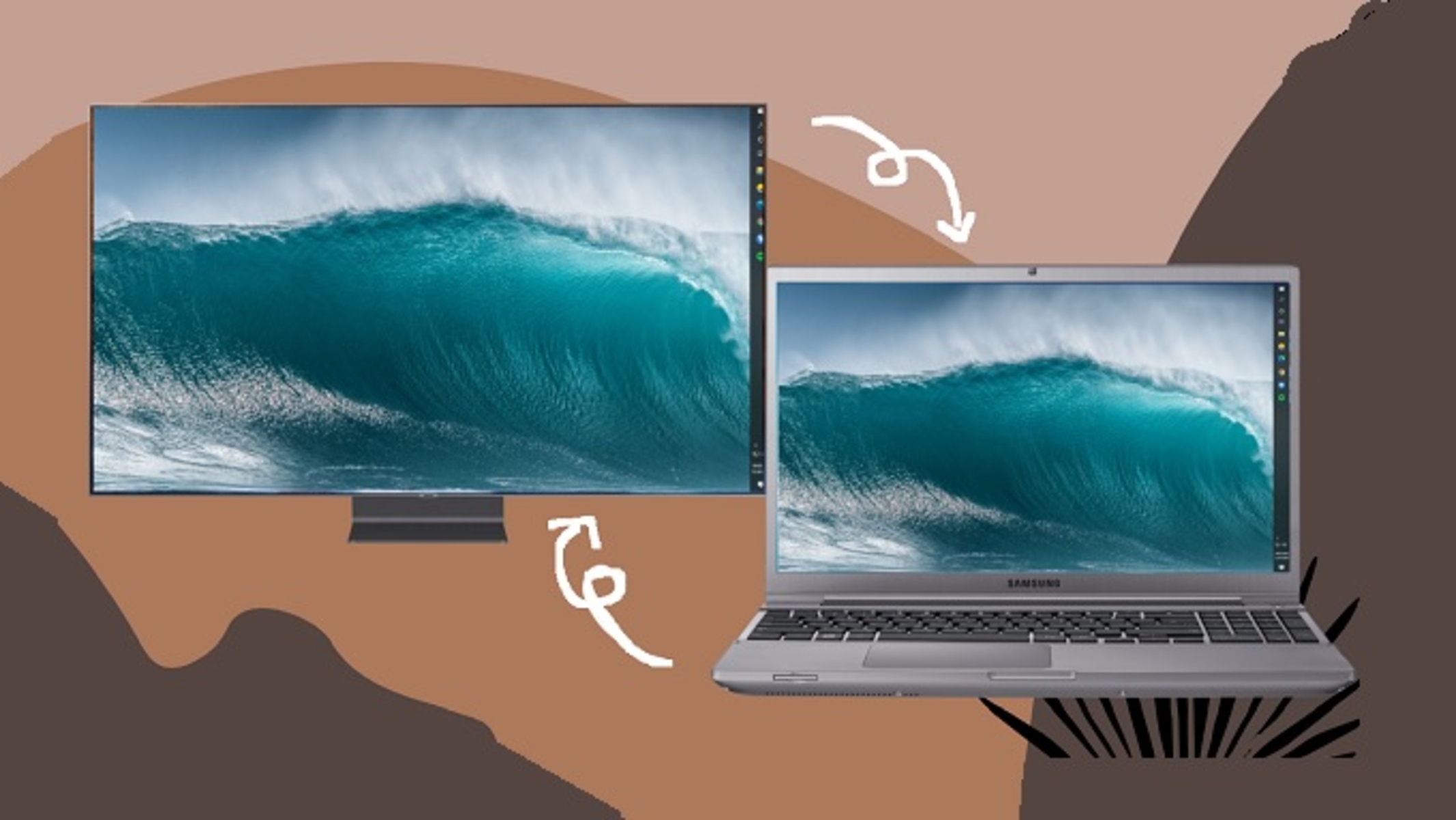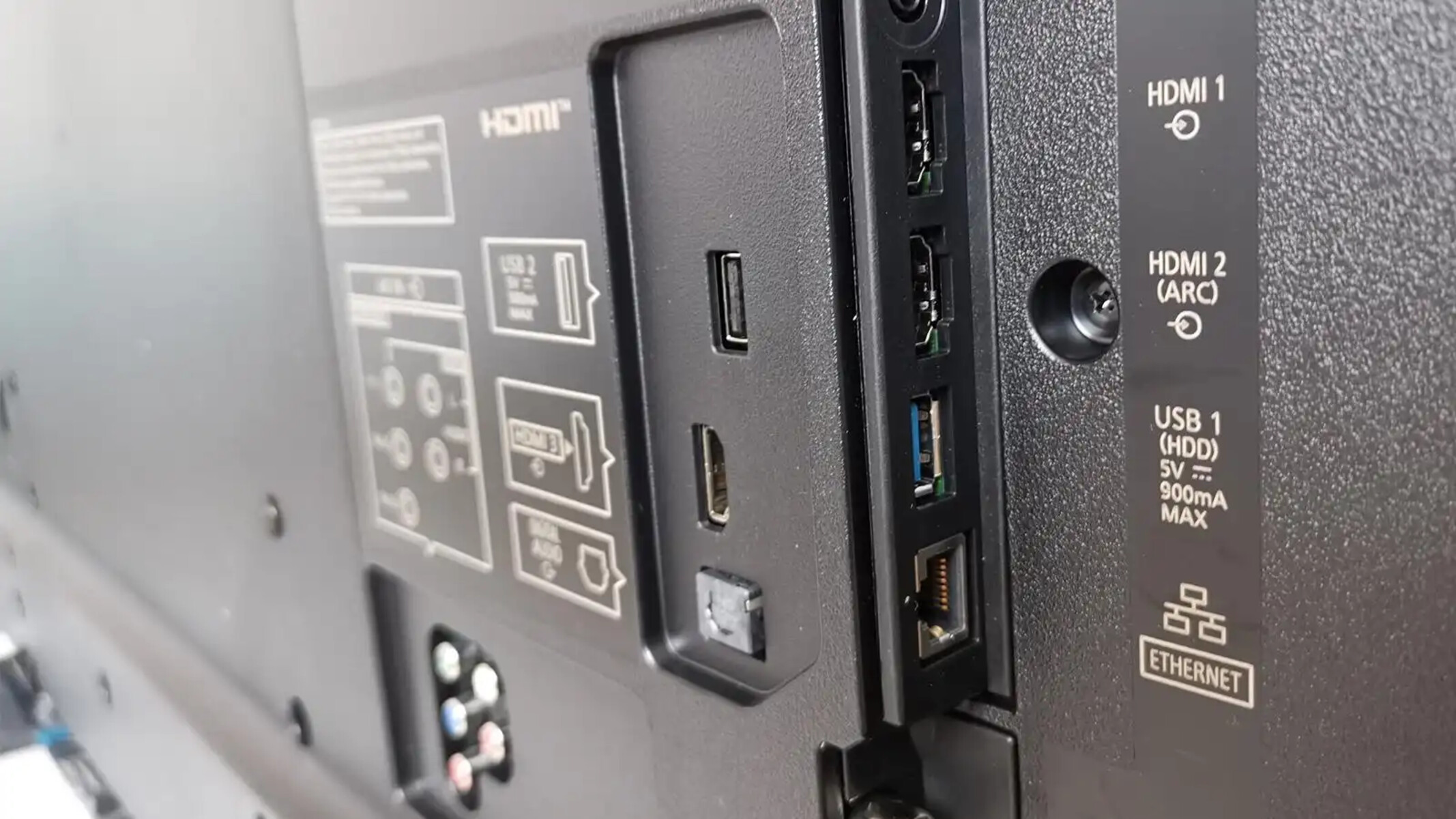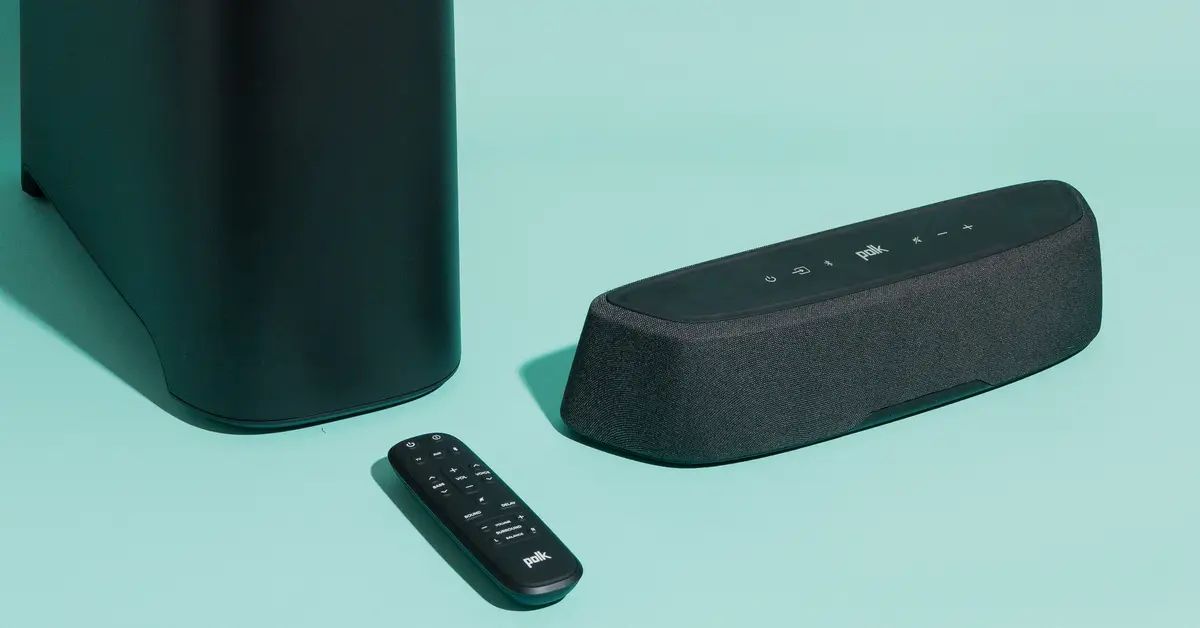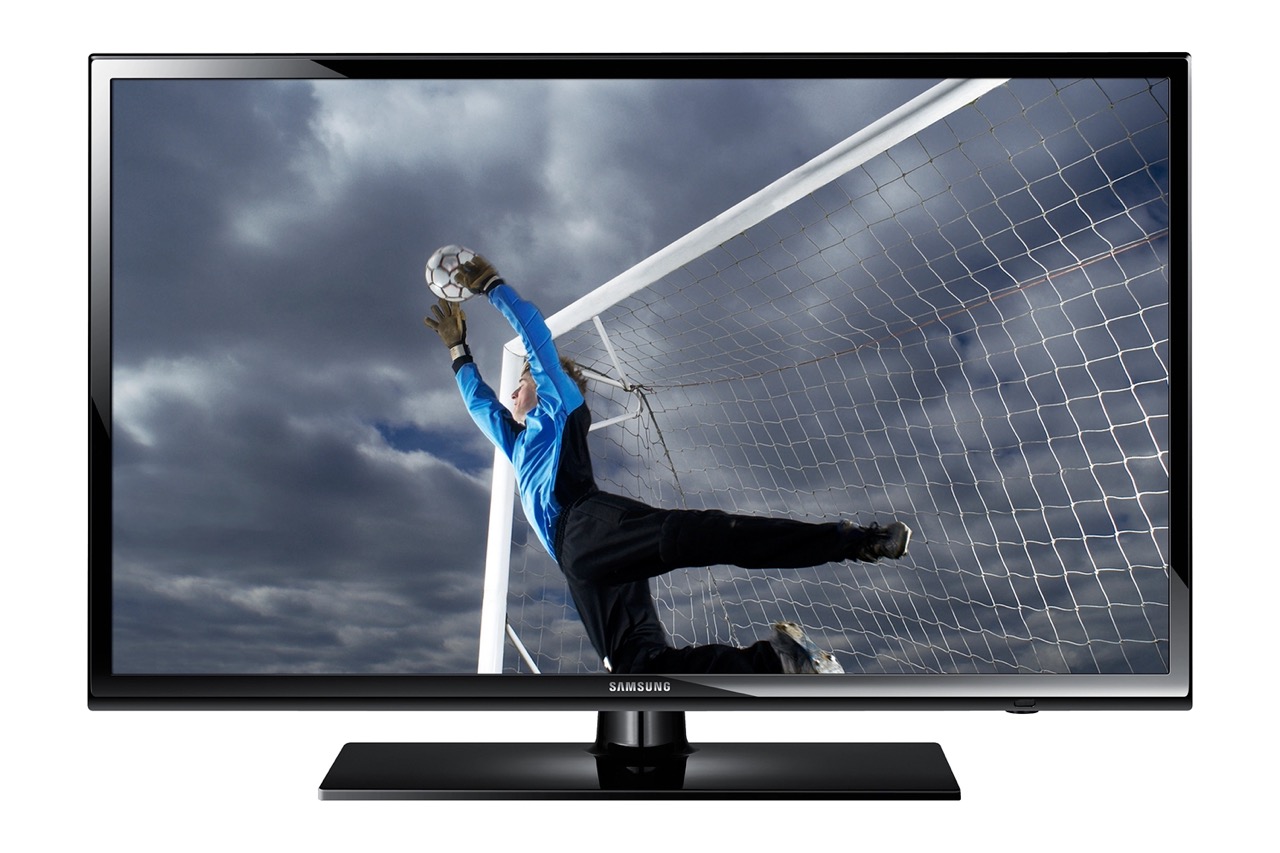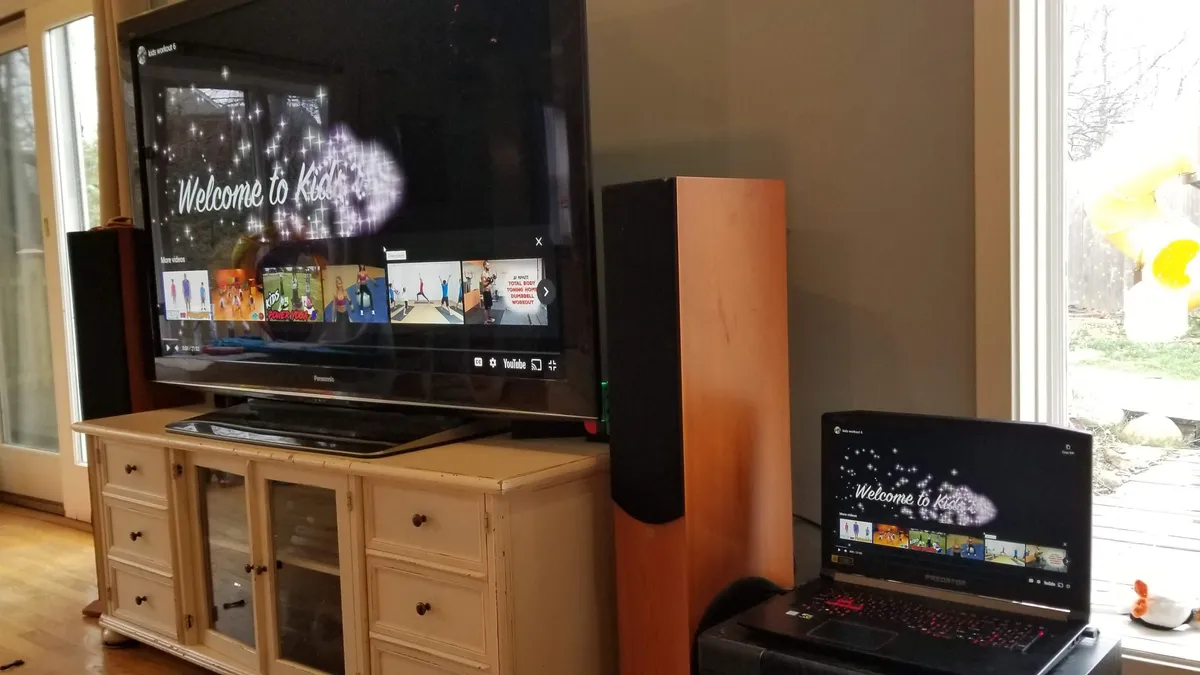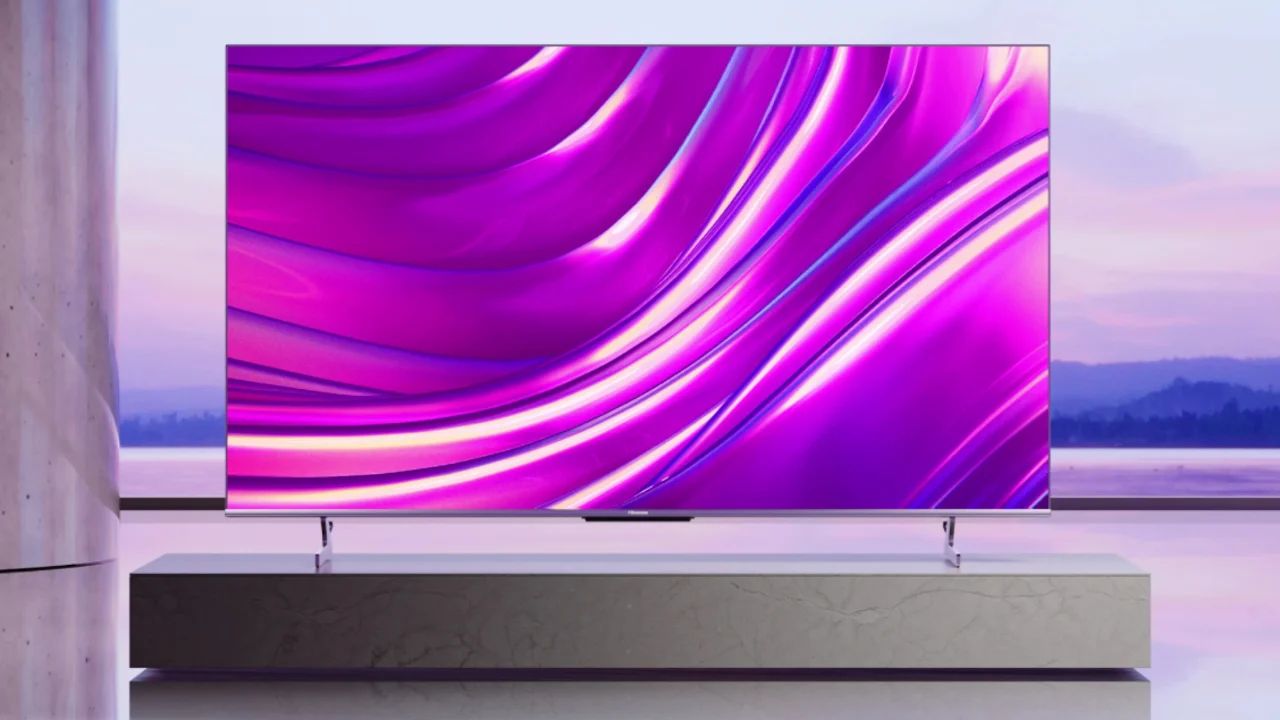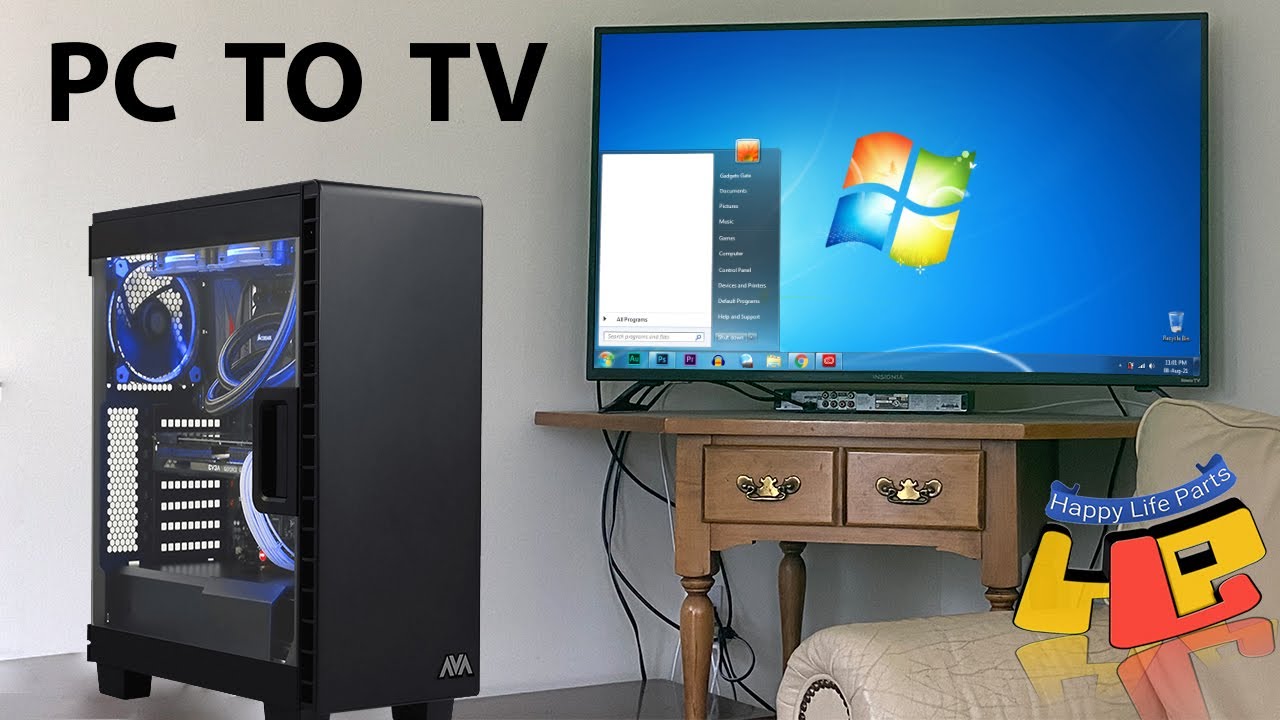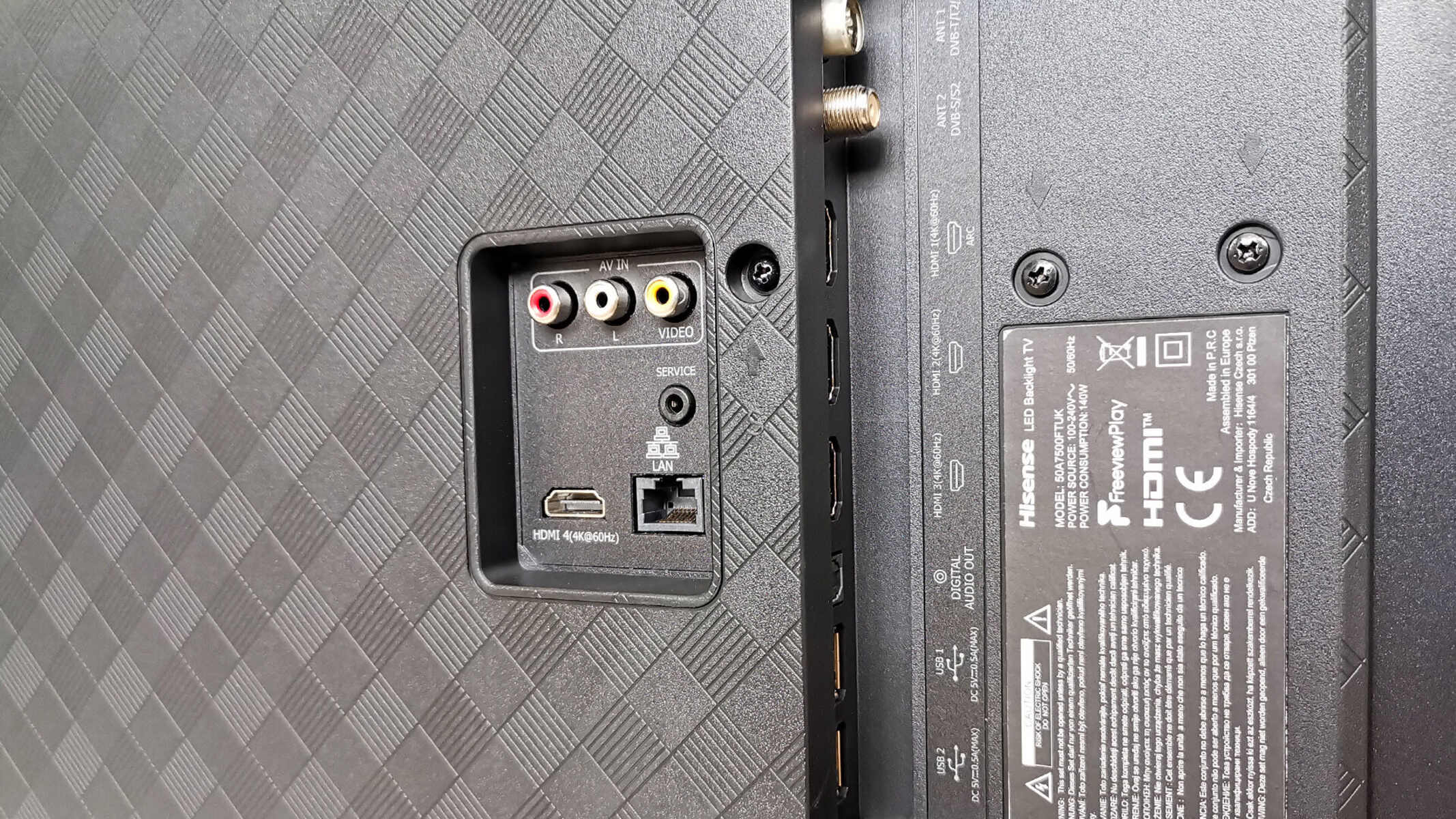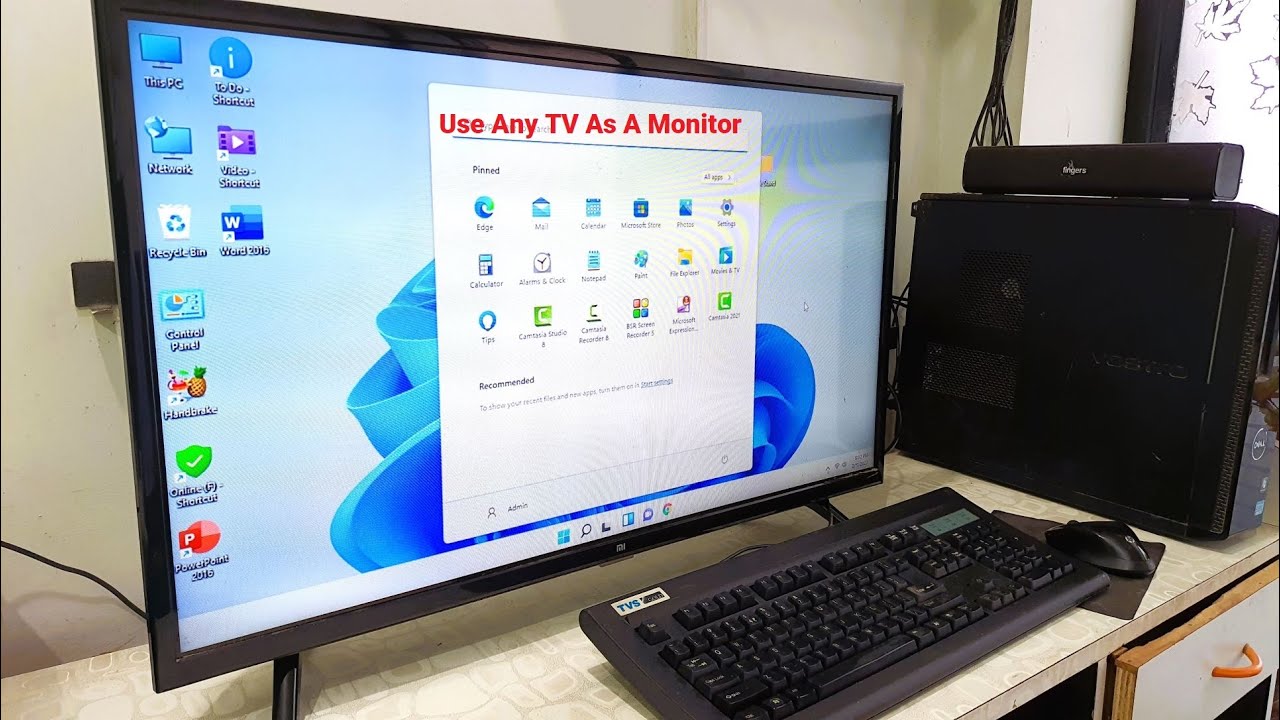Introduction
Welcome to the world of technology where we can seamlessly connect our computers to our TV screens and enjoy a truly immersive experience. One of the most popular methods to achieve this is through the use of HDMI (High-Definition Multimedia Interface) cables.
In this article, we will explore how to connect your computer to your TV using an HDMI cable and ensure that the sound is properly transmitted. HDMI cables not only transmit high-quality video signals but also carry audio signals, making it convenient to enjoy movies, videos, and music on your TV with just a single cable connection.
Whether you want to watch your favorite Netflix series on a larger screen, play video games in high definition, or give a presentation using your TV as a display, connecting your computer via HDMI is a simple and effective solution.
However, it’s not uncommon to encounter sound issues when connecting a computer to a TV using HDMI. The audio may not play through the TV speakers as expected, or you may experience no sound at all. But fret not! In this guide, we will address common troubleshooting steps for resolving sound-related issues and help you get the audio playing smoothly through the HDMI connection. Let’s dive in!
What is HDMI?
HDMI, which stands for High-Definition Multimedia Interface, is a digital audio and video interface used to transmit high-quality signals between devices. It has become the standard connection type for transmitting high-definition video and audio signals from various devices such as computers, televisions, gaming consoles, and DVD players.
HDMI cables have revolutionized the way we connect and enjoy media content. Before HDMI, analog connections like composite and component cables were commonly used, but they couldn’t provide the same level of audio and video quality as HDMI. With HDMI, you can experience crystal-clear picture quality and high-fidelity audio, making your entertainment experience truly immersive.
HDMI cables transmit both video and audio signals in a single cable, eliminating the need for multiple cables and simplifying the setup process. The most common type of HDMI cable is the standard HDMI cable, which supports high-definition video resolutions up to 1080p and eight channels of audio. There are also enhanced versions, such as HDMI 2.0 and HDMI 2.1, which can handle even higher resolutions, refresh rates, and advanced features like HDR (High Dynamic Range).
One of the key features of HDMI is its active digital-to-analog conversion, which ensures that the audio and video signals are transmitted without loss of quality. Unlike analog connections, HDMI delivers a pure digital signal from the source device to the display, resulting in sharper images and cleaner sound.
Another advantage of HDMI is its compatibility with various audio formats, including Dolby Digital, DTS, and uncompressed multi-channel audio. This means you can enjoy surround sound systems and get the most out of your audio setup when connecting your computer to a TV via HDMI.
Overall, HDMI has become the go-to standard for connecting devices and enjoying high-quality audio and video. Its versatility, simplicity, and superior performance make it an essential component of any modern home entertainment setup or professional audiovisual system.
Connecting Computer to TV with HDMI cable
Connecting your computer to a TV using an HDMI cable is a straightforward process that can greatly expand your digital entertainment possibilities. Follow these steps to establish a successful connection:
- Check the ports: Make sure both your computer and TV have HDMI ports. Most modern computers and TVs come equipped with HDMI ports, but it’s always good to double-check.
- Select the correct HDMI input: Using your TV’s remote control, change the input source to the corresponding HDMI port that you have connected the cable to. This step may vary depending on your TV brand and model, so consult your TV’s manual if needed.
- Connect the HDMI cable: Insert one end of the HDMI cable into the HDMI output port on your computer or laptop. Then, insert the other end into the HDMI input port on your TV. Ensure that the cable is securely connected to both devices.
- Adjust display settings: On your computer, navigate to the display settings. This can usually be done by right-clicking on the desktop and selecting “Display settings” or something similar. Choose the appropriate display mode, such as “Duplicate” (to mirror your computer screen on the TV) or “Extend” (to use the TV as an additional display).
- Configure audio settings: By default, sound should automatically be transmitted through the HDMI cable. However, if you are not hearing any audio or if you have multiple audio output options, you may need to adjust the audio settings. On your computer, navigate to the sound settings and select the HDMI output as the default audio playback device.
Once you have completed these steps, your computer’s display should be mirrored or extended on your TV screen, and the audio should be playing through your TV speakers. Enjoy watching your favorite movies, playing games, or giving presentations with the convenience of a larger screen and enhanced audio.
Note that some computers may require a combination of keys (e.g., Fn + F4) to redirect the display output to the TV. Make sure to consult your computer’s user manual or the manufacturer’s website if you encounter any difficulties.
Troubleshooting Sound Issues
While connecting your computer to a TV with an HDMI cable usually results in seamless audio playback, there are instances where you may encounter sound-related issues. Here are some troubleshooting steps to help you resolve common sound issues:
- Check the volume: Double-check that the volume on your computer and TV is not muted or set too low. Adjust the volume settings on both devices and gradually increase the volume to a suitable level.
- Confirm the HDMI connection: Ensure that the HDMI cable is securely connected to both your computer and TV. Sometimes, a loose connection can prevent the audio signal from being transmitted properly.
- Restart the devices: Try restarting both your computer and TV. This can help clear any temporary glitches and restore proper audio functionality.
- Update drivers: Outdated or incompatible audio drivers can cause sound issues. Check the manufacturer’s website for your computer and TV to download and install the latest audio drivers. Restart the devices after updating the drivers.
- Try a different HDMI cable: If you have access to another HDMI cable, try using it to connect your computer to the TV. Sometimes, a faulty cable can result in audio problems.
- Check audio settings on the computer: Ensure that the HDMI output is selected as the default audio playback device on your computer. Go to the sound settings and make the necessary adjustments if needed.
- Test audio on another device: If possible, connect your computer to a different TV or audio device with HDMI support to determine whether the issue lies with the computer or the TV. This can help pinpoint the cause of the sound problem.
- Consult technical support: If none of the above steps resolve the sound issues, it is recommended to seek assistance from the technical support of your computer or TV manufacturer. They may provide further troubleshooting guidance specific to your device.
By following these troubleshooting steps, you should be able to overcome common sound issues that may arise when connecting your computer to a TV via HDMI. Remember to be patient and thorough when troubleshooting, and don’t hesitate to seek professional assistance if needed.
Adjusting Sound Settings on Computer
When connecting your computer to a TV with an HDMI cable, it’s important to ensure that the sound settings on your computer are properly configured. Here are some steps you can take to adjust the sound settings on your computer and optimize the audio output:
- Open the sound settings: On Windows, right-click on the volume icon in the taskbar and select “Open Sound settings.” On Mac, go to the Apple menu, select “System Preferences,” and then click on the “Sound” icon.
- Select the correct playback device: In the sound settings, navigate to the “Playback” tab or “Output” section. Make sure that the HDMI output or your TV is selected as the default playback device. If it’s not the default, select it and click on the “Set Default” button.
- Adjust volume levels: In the sound settings, you can also adjust the volume levels for different audio outputs. Ensure that the volume level for the HDMI output is suitable and not set too low.
- Configure audio enhancements: Some computers offer audio enhancement options that can enhance the sound quality. Explore the sound settings to see if there are any enhancements available, such as equalizers or virtual surround sound. Experiment with these settings to find your preferred audio configuration.
- Update audio drivers: Outdated or incompatible audio drivers can impact sound performance. Visit the website of your computer’s manufacturer or the audio driver provider to check for any available driver updates. Install the updates and restart your computer if necessary.
- Test different configurations: If you have multiple audio output options on your computer (for example, internal speakers, headphones, or external speakers), test the audio playback on each device to ensure they are working correctly.
By adjusting the sound settings on your computer, you can customize the audio output and ensure that the sound is properly transmitted to your TV via the HDMI connection. Experiment with different settings until you achieve the desired sound quality and volume level.
Troubleshooting Sound Issues on TV
If you have connected your computer to your TV using an HDMI cable and encounter sound issues, the problem may lie with the TV’s audio settings or hardware. Here are some troubleshooting steps to help you resolve sound-related issues on your TV:
- Check TV volume settings: Ensure that the volume on your TV is not muted or set too low. Use the volume buttons on your TV remote to increase the volume and make sure it is at a suitable level.
- Confirm HDMI input source: Double-check that you have selected the correct HDMI input source on your TV. Use the “Input” or “Source” button on your TV remote to cycle through the available input sources until you find the one connected to your computer.
- Power cycle the TV: Turn off your TV and unplug it from the power source. Wait for a few minutes, then plug it back in and turn it on. This can sometimes resolve temporary glitches that may be affecting the sound output.
- Try a different HDMI port: If your TV has multiple HDMI ports, try connecting your computer to a different port. Sometimes, an HDMI port may have a faulty connection that affects the audio transmission.
- Update TV firmware: Check if there are any available firmware updates for your TV. Visit the manufacturer’s website or consult the TV’s user manual to see if there are instructions on how to update the firmware. Keeping the TV firmware up to date can resolve software-related issues that may be affecting the sound.
- Factory reset the TV: As a last resort, you can try performing a factory reset on your TV. This will revert all settings to their original defaults. Refer to the TV’s user manual or contact the manufacturer’s support for instructions on how to perform a factory reset.
- Consult technical support: If none of the above steps resolve the sound issues, it is recommended to seek assistance from the technical support of your TV manufacturer. They may be able to provide further troubleshooting advice or arrange for repairs if necessary.
By following these troubleshooting steps, you should be able to diagnose and resolve common sound issues that may occur on your TV when connected to a computer via HDMI. Remember to check all settings thoroughly and consult the TV’s user manual or manufacturer’s support resources for specific guidance related to your TV model.
Conclusion
Connecting your computer to your TV using an HDMI cable opens up a world of possibilities for enjoying your favorite digital content on a larger screen with enhanced audio. While sound issues may sometimes arise, troubleshooting steps can help you resolve them and ensure a seamless experience.
In this guide, we explored the process of connecting a computer to a TV with an HDMI cable and addressed common sound-related issues that may occur. By following the instructions for connecting the HDMI cable properly and adjusting the sound settings on both your computer and TV, you can enjoy high-quality audio playback through your TV speakers.
However, if you encounter sound issues, we provided troubleshooting steps to help identify and resolve the problem. Checking volume levels, confirming HDMI connections, updating drivers and firmware, and seeking technical support are some of the strategies you can employ to troubleshoot sound issues effectively.
Remember to consult the user manuals and support resources provided by your computer and TV manufacturers for device-specific guidance. Additionally, staying updated with the latest audio drivers, firmware upgrades, and general maintenance can help prevent sound-related issues in the future.
Enjoy the convenience and entertainment possibilities that connecting your computer to your TV via HDMI brings. Whether you’re watching movies, playing games, giving presentations, or simply enjoying multimedia content, the combination of high-definition video and superb audio will enhance your overall viewing experience.







